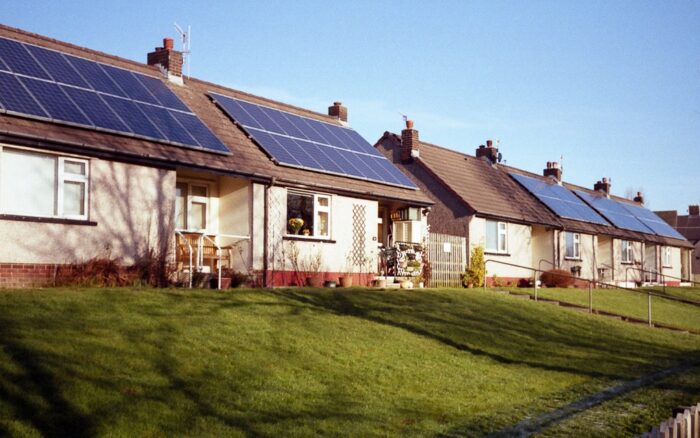Solar for All: A historic opportunity to expand access in the South

A competitive grant program to bring solar power to Americans with limited incomes has found huge demand in the South.
This week, Alabama, Georgia, North Carolina, South Carolina, Tennessee, and Virginia, as well as other tribal governments, municipalities, and nonprofits, submitted applications for Solar for All, a new program designed to expand solar access.
I’m thrilled to see enthusiasm for this funding in Southern states, which have traditionally lagged behind the rest of the country in residential solar while many households struggle to pay their electricity bills.
Gudrun Thompson, leader of SELC’s Energy Program
Part of the historic federal climate legislation the Inflation Reduction Act, passed last summer, the $7 billion program will fund rooftop solar projects benefiting communities with lower incomes and provide workforce development enabling millions of households’ access to affordable, resilient, and clean solar energy and related jobs. These funds have the potential to double the number of rooftop solar customers with 100% of cost saving solar benefiting customers that would not otherwise be able to access solar.
“This is a generational opportunity to enable low-income households in the South to access affordable, resilient, and clean solar energy,” said Gudrun Thompson, leader of SELC’s Energy Program. “I am thrilled to see the enthusiasm for this funding in Southern states, which have traditionally lagged behind the rest of the country in residential solar while many households struggle to pay their electricity bills.”
Energy costs savings for families with low income
Nowhere is this program needed more than in the South, where lower-income households and communities of color often lack access to funding for solar energy projects and are overburdened by high energy bills and pollution from fossil-fueled power plants, while policy and regulatory barriers further limit access to solar.

“This funding could tip the balance for Southern families overburdened by rising energy bills and who lack access to clean, affordable, reliable power.” said Alys Campaigne, SELC’s Climate Initiative Leader. “This funding is key to not just expanding renewable energy but making it cost-effective for the Southerners who need it most.”
Households with lower incomes in the South have been disproportionately left out of our country’s clean energy transition – they face an average energy burden three times higher compared to households with moderate and high incomes, and their pathway to adopting solar is often impeded by policy barriers and up-front costs.
Solar for All will directly alleviate high energy burden– that is households that spend more than 6% of their income on energy bills. Programs target a minimum monthly savings of 20% of the average local utility bill. Program funds must be used to help communities with lower incomes. This, coupled with declining solar costs, could lower utility bills for families, especially Southern Black and Brown families who have some of the highest energy burdens in the country.
This funding is key to not just expanding renewable energy but making it cost-effective for the Southerners who need it most.
Alys Campaigne, SELC’s Climate Initiative Leader
These grants also complement the billions in funding available for energy efficiency upgrades, building code updates, and energy storage systems that will further make solar an effective, affordable way to address the climate crisis and reduce energy bills for families.
A holistic approach to expanding solar access

The EPA is looking to fund long term and lasting programs that move beyond financial assistance. That includes providing additional services, including workplace development, consumer education and outreach, and project development. These transformational tools will help to overcome barriers to solar deployment, while creating good-paying jobs in our communities.
Many state plans will include workforce development programs, also bringing in new clean energy jobs to their states. The solar industry has grown at an average annual rate of 33 percent over the last decade, and Solar For All funding will not only help to boost the industry but will also ensure that its economic benefits are spread more equitably.
How SELC is working to shape Solar for All programs
Across the South, utility and state policies remain central to the widespread adoption of solar and SELC continues to advocate at the federal, state, and local level for communities to make decisions on their own properties that empower them to take control of their energy use and lower their monthly bills.
Increasing access to solar will lower energy costs for families by providing cheaper energy over the long-term, creating good-quality jobs in communities that have been left behind, advancing environmental justice by alleviating energy burdens, and tackling the climate crisis by lowering emissions and our reliance on fossil fuels for energy.
